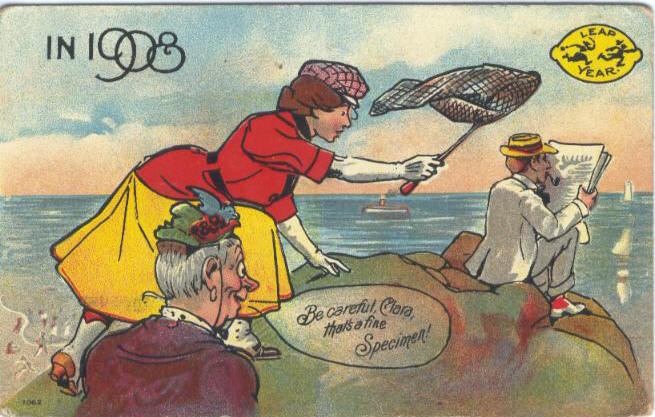
When it comes to marriage, three things hold true: the man proposes, the wedding is the bride’s day, and the bachelor party is a controversial affair. However, this year men should beware, especially if you’re living in Britain or Ireland. On leap years like this one, a woman is allowed to propose and is entitled to compensation if the man declines.
The tradition seems to have started before the 17th century, as Eric Felten from The Wall Street Journal relays:
A play from the turn of the 17th century, “The Maydes Metamorphosis,” has it that “this is leape year/women wear breeches.” A few hundred years later, breeches wouldn’t do at all: Women looking to take advantage of their opportunity to pitch woo were expected to wear a scarlet petticoat — fair warning, if you will.
There is some disagreement as to when the tradition started though, as one folktale says Saint Patrick created the law in the 5th Century after Saint Bridget complained about women not being able to ask the men they fancied to marry. Another attests that in 1288, Queen Margaret of Scotland created a law requiring that if the man refuse such a proposal, he give a pair of leather gloves, a single pose, one pound, and a kiss; interestingly she was five at the time and no record of this law remains, so it’s unlikely to say the least.
We do know that as of 1908, the tradition was popular enough to appear on postcards like the one pictured above. Most of the images involve maidens either waiting for the leap year to come or getting there traps ready to use on unsuspecting men. But by 1972 the women’s liberation movement was gaining significant ground and women were beginning to propose without restriction. Without the need for the ritual, it fell into disuse.
Today’s Tangent: The leap day was seen as unusual because it only came every four years (more accurately, 97 years out of 400), and was considered a middle state between February 28th and March 1st. Such inbetween states were said to have strange properties, such as the state of being betrothed — the couple was neither single nor married but in the middle. Given this, it was bad luck to get photographed because it jinxed the relationship; by flaunting their togetherness in a picture, they were risking it not happening.
Pingback: » December 2012 Update Travis Gerhardt